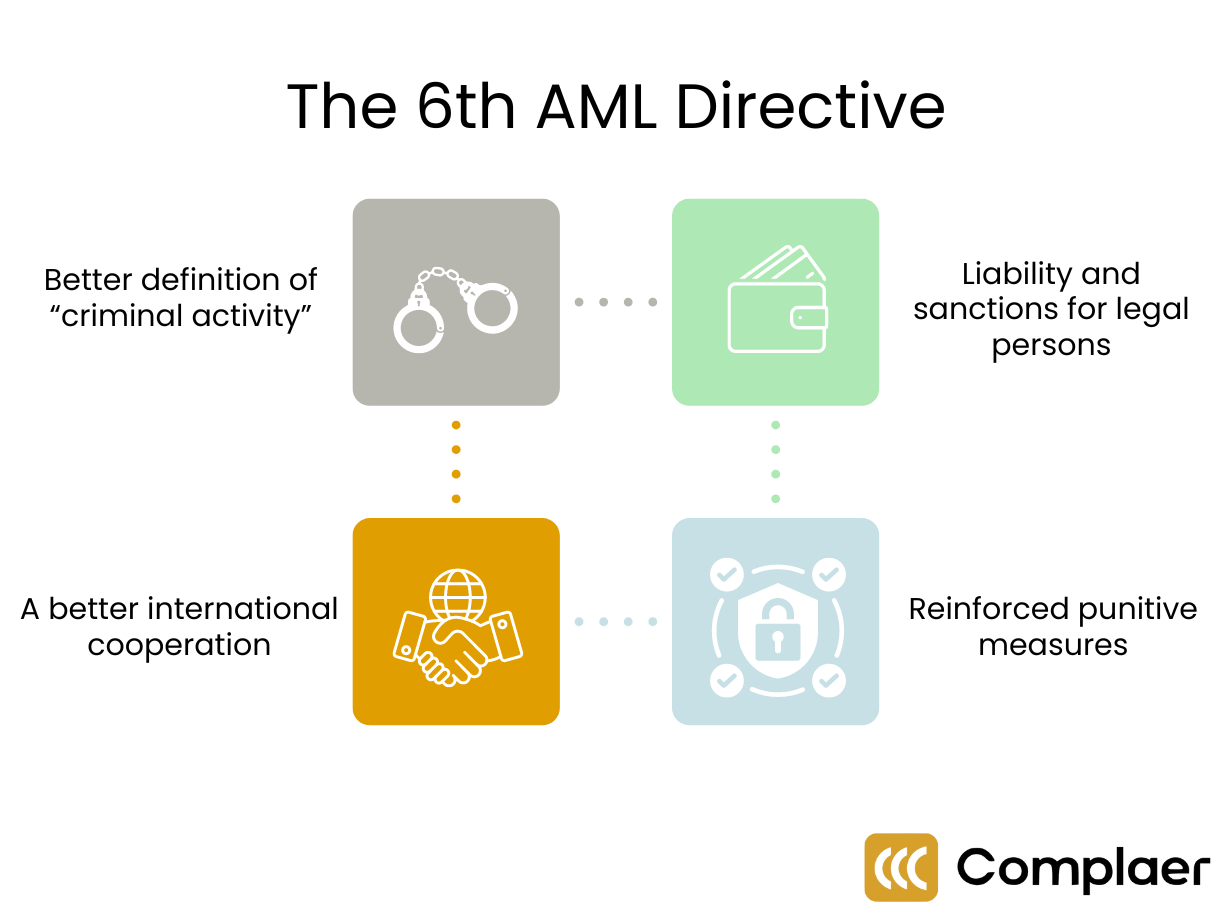Navigating the EU's AML Directivesfor Gambling Compliance
The European Union (EU) Anti-Money Laundering (AML) Directives are a series of regulations designed to combat money laundering and terrorist financing within the EU.
These directives establish a standardized legal framework across member states, requiring all entities dealing with finances to implement preventative measures. By requiring customer due diligence, transaction monitoring, and suspicious activity reporting, the AML Directives aim to create a transparent financial system less susceptible to criminal misuse.
Understanding these directives is crucial for your company to avoid hefty fines and reputational damage associated with AML breaches.
Additionally, navigating the complexities of AML compliance can present challenges, but this knowledge empowers your company to develop robust procedures and stay ahead of evolving financial crime tactics.
Understanding the EU AML Directives
There have been six iterations of the EU AML Directives, with the fourth (AML4D) coming into effect in 2017. These directives are continually updated to address the ever-changing tactics of financial criminals, who are constantly developing new methods to launder money and exploit weaknesses in existing regulations.
The European Union’s Anti-Money Laundering Directives (AMLDs) have progressively strengthened regulations to combat financial crime.
For instance, the 4th AMLD (AMLD 4) tightened existing measures, focusing on transparency within financial institutions and aligning with international standards. It also brought new entities like investment firms under AML compliance and introduced regulations for electronic money.
Building on AMLD 4, the 5th AMLD (AMLD 5) further enhanced transparency by requiring central registries to disclose beneficial ownership of companies and trusts. It also improved information sharing between authorities and addressed new threats like virtual currencies being misused for financing terrorism.
Furthermore, AMLD 5 established stricter criteria for identifying high-risk countries regarding money laundering.

The latest directive, AMLD 6, aims for a standardized approach across EU member states. It expands the scope of potential offenses and liability, allowing authorities to prosecute money laundering more effectively. This directive also increases potential sanctions for businesses and individuals involved in money laundering activities.
Overall, the AMLDs aim to create a more transparent and accountable gambling environment within the EU. While this increases compliance burdens for operators, it also helps to combat money laundering and terrorist financing, ultimately protecting the integrity of the gambling industry.
Regulatory requirements and impact
Malta
Malta has incorporated various AML directives from the EU into its national legislation. The country translates these directives into national laws, primarily through the Prevention of Money Laundering Act and its accompanying regulations.
Maltese authorities constantly update their legislation to address evolving threats. A recent example is the transposition of the 5AMLD which required a public beneficial ownership register. As for the challenges, Malta has faced criticism for delays in fully implementing some directives, like the 5AMLD.
Denmark
Denmark is also constantly updating the Money Laundering Act to reflect the latest AML Directives. For instance, they recently incorporated the requirements of the 4AMLD and 5AMLD Directives.
However, due to its constitutional agreements with the EU, Denmark hasn’t yet implemented the 6AMLD.
Looking ahead, the upcoming EU regulation, Markets in Crypto Assets (MiCA), expected in 2024, might be adopted as part of Denmark’s strategy to address money laundering risks associated with virtual assets. While the Danish government has not explicitly stated its stance on implementing MiCA, it remains a possibility.
Denmark faces similar challenges as Malta, as updating the Money Laundering Act to reflect new directives requires swift amendments, and the delay in implementing 6AMLD exemplifies this challenge.
Finland
Finland enacted a new Anti-Money Laundering Act in 2017. This brought transparency measures to financial institutions, aligned them with international standards, and included new entities like investment firms under AML compliance. Electronic money regulations were also introduced.
Finland further enhanced transparency by establishing a central registry disclosing beneficial ownership of companies and trusts. Information sharing between authorities improved, along with regulations to address virtual currencies being misused for terrorism financing.
More recently, Finland’s government proposed amendments to existing legislation to grant relevant authorities access to the bank and payment account control system.
As 5AMLD highlights, criminals will continue to exploit new technologies like virtual currencies. Continuously adapting regulations to address these evolving threats is a challenge Finland has to face.
Case studies and best practices
Sweden
The Swedish Anti-Money Laundering Intelligence Task Force (SAMLIT) offers valuable insights into achieving successful AML compliance.
The core strength of SAMLIT lies in its collaborative nature. By bringing together the Swedish Police Authority and the five major banks (including Danske Bank), Sweden fostered a direct line of communication and information sharing.
When law enforcement and financial institutions work together, they can create a stronger defense against money laundering and organized crime.
Malta
Malta’s journey with AML compliance offers a valuable lesson in addressing deficiencies and regaining trust.
Initially, the Financial Action Task Force (FATF) grey-listed Malta in 2021 due to weaknesses in two key areas: transparency of beneficial ownership and tackling money laundering linked to tax evasion.
By taking significant steps, including a vigorous enforcement drive, Malta successfully addressed these concerns and exited the grey list in 2022. This case underscores the importance of continuous improvement and a comprehensive approach to AML compliance.
Lithuania
Lithuania has made significant progress in its AML compliance, achieving a “largely compliant” rating from MONEYVAL for Recommendations 24 and 32 concerning transparency of ownership and cash couriers.
Key improvements include enhanced customs authority powers and better coordination between authorities. However, some minor issues remain, like cash transportation by mail/cargo declarations and temporary holding of suspicious currency.
Additionally, while a beneficial ownership register was established, concerns exist regarding the proportionality of sanctions and risk assessment of legal entities.
Overall, this case demonstrates that addressing deficiencies like information gathering and coordination can lead to significant advancements, but remaining vigilant on outstanding issues is also crucial.
Wishing a smooth compliance for your company?
Complaer can be your secret weapon in achieving AML compliance and combating money laundering. With our RegTech solution, you can automate 60% of your AML compliance tasks, freeing up your team to focus on other more complex issues.
As cyber criminals evolve to find new vulnerabilities, your ability to detect and respond to suspicious activities should improve too. Thankfully, our Rule Engine is designed to not only address current risks, but also adapt to evolving financial threats and regulatory changes in real time.
Plus, features like real-time transaction monitoring, screening, and risk assessment capabilities allow your business to identify even the most subtle signs of money laundering and terrorist financing.
You might be interested in



